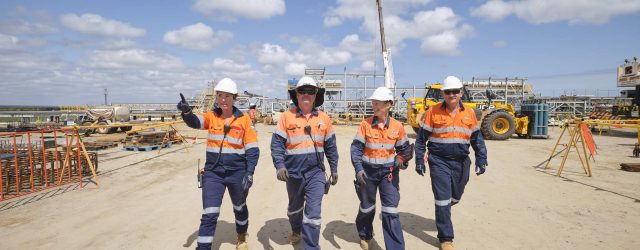Change is in the air
Posted: 24th January 2024
Posted in: Blog

Posted: 24th January 2024
Posted in: Blog
Imagine a future where every construction project is completed on time and on budget, and the only newspaper headlines celebrate the sheer skill and excellence displayed in the structures being built. Picture construction companies operating with the efficiency and profitability of Tesla, investing in a thriving local manufacturing industry producing prefabricated building modules and project components in a safe, quality-controlled environment, all while significantly reducing both carbon emissions and costs to taxpayers.
This vision could position Australia as one of the most advanced countries in the world!
In this future, project owners, contractors, designers, suppliers and unions align seamlessly, working collaboratively to maximise both project and social outcomes. Beyond that, picture a scenario where everyone in the construction industry works less than 40 hours a week, women make up more than 13 per cent of the workforce and an industry wellbeing program is accessible to all. Imagine this all leading to the construction industry becoming Australia’s most sought-after employer.
Some may question if this isn’t already happening, while others, especially those entrenched in the industry, might find this utopian vision too good to be true. However, the reality is that many elements of this future are already in motion or moving closer to reality.
Formed in May 2015, the Victorian Level Crossing Removal Authority was tasked with removing 50 level crossings across Melbourne. Using a panel of contractors and a collaborative delivery model, the Authority has been able to deliver the vast majority of crossing removals either on time and on budget or in many cases ahead of time and under budget. So successful has the model been that the scheme has been continually expanded and has now removed 74 level crossings with plans to remove another 36 by 2030. A similar program delivery model has been successfully adopted by Major Road Projects Victoria to deliver suburban road upgrades.
Developed in 2019, the ecologiQ initiative targets Victoria to be world leader in the sustainable use of recycled and reused materials in projects by 2025. Innovations such as chemical polymer replacements for cement have been developed that reduce the embodied carbon of concrete by over 80 per cent, and further reductions are possible through use of green steel produced using electric arc furnaces.
The Building Equality Policy (BEP) aims to create training and employment opportunities for women through government procurement on government building, infrastructure and civil engineering projects. It is complemented by the current development of a national construction ‘culture standard’ to embed flexible working arrangements and wellbeing initiatives on government funded projects across the country.
For our part, the nation’s largest contractors – those forming part of the Australian Constructors Association – have pledged to embed flexible work plans for staff on all their projects and within five years 75 per cent of them will be recognised by the Workplace Gender Equality Agency as ‘Employers of Choice’. Moreover, a campaign to attract more women into blue collar roles in the industry is on the horizon.
While many of these initiatives focus on large government projects and involve major contractors, I believe that because of the scale of projects involved, the changes will ultimately flow through all levels and all sectors of the industry, and let’s be frank, this change must happen. The construction industry cannot continue down the path of busts, blowouts and delays. It is not in the interest of workers, it is not in the interests of contractors, and it is definitely not in the interests of the State.
The future is already here; bring on the future!